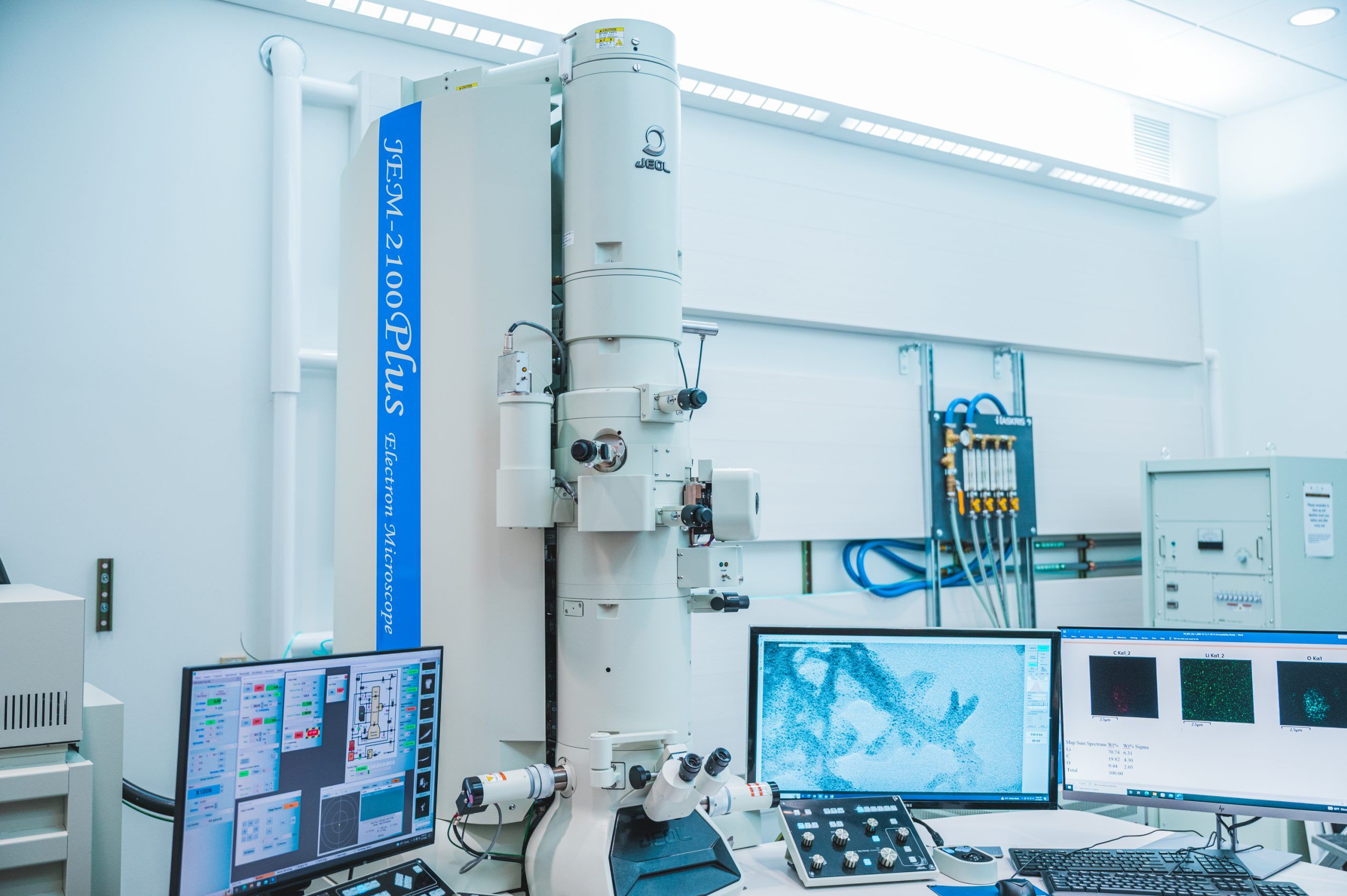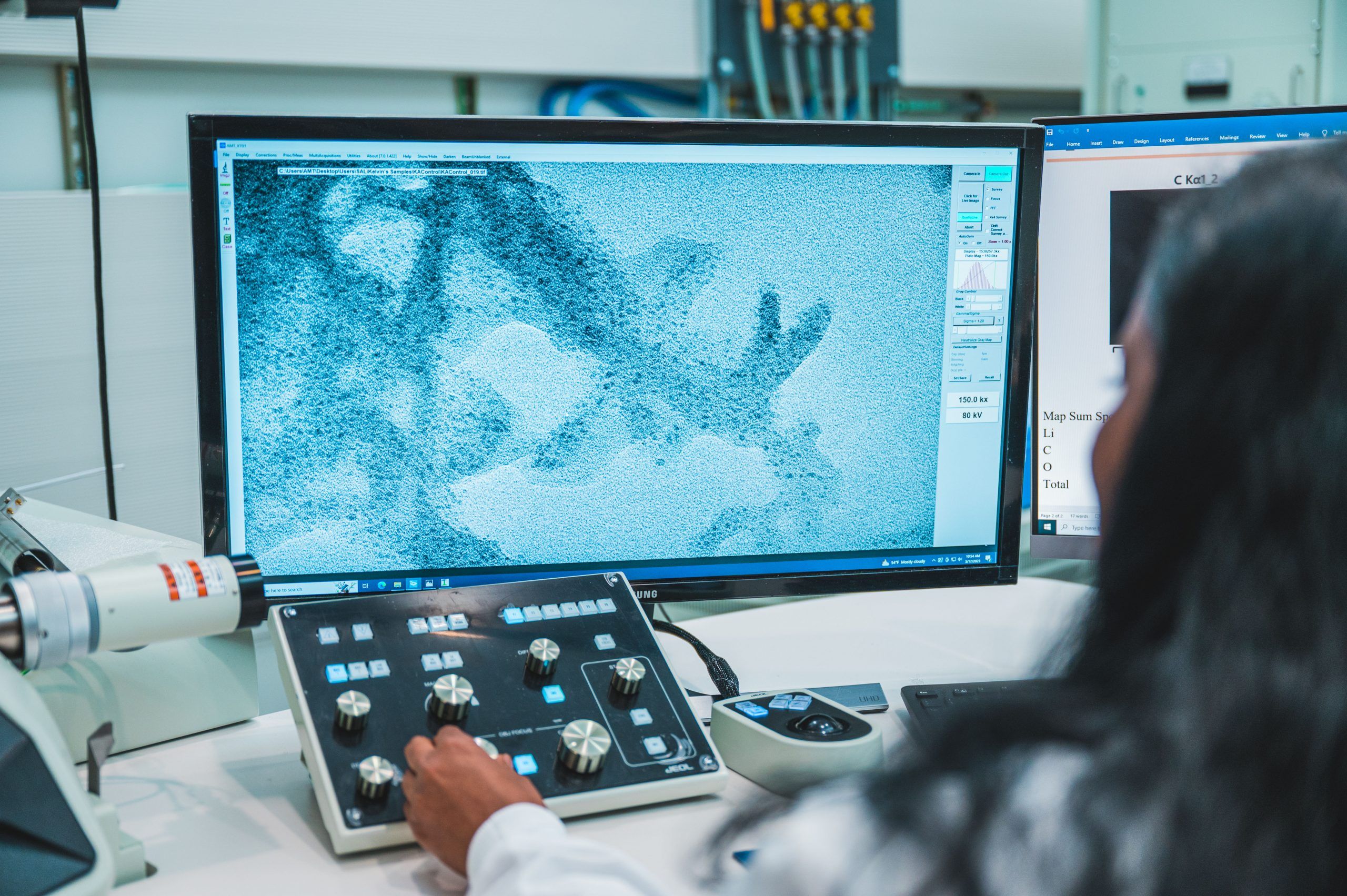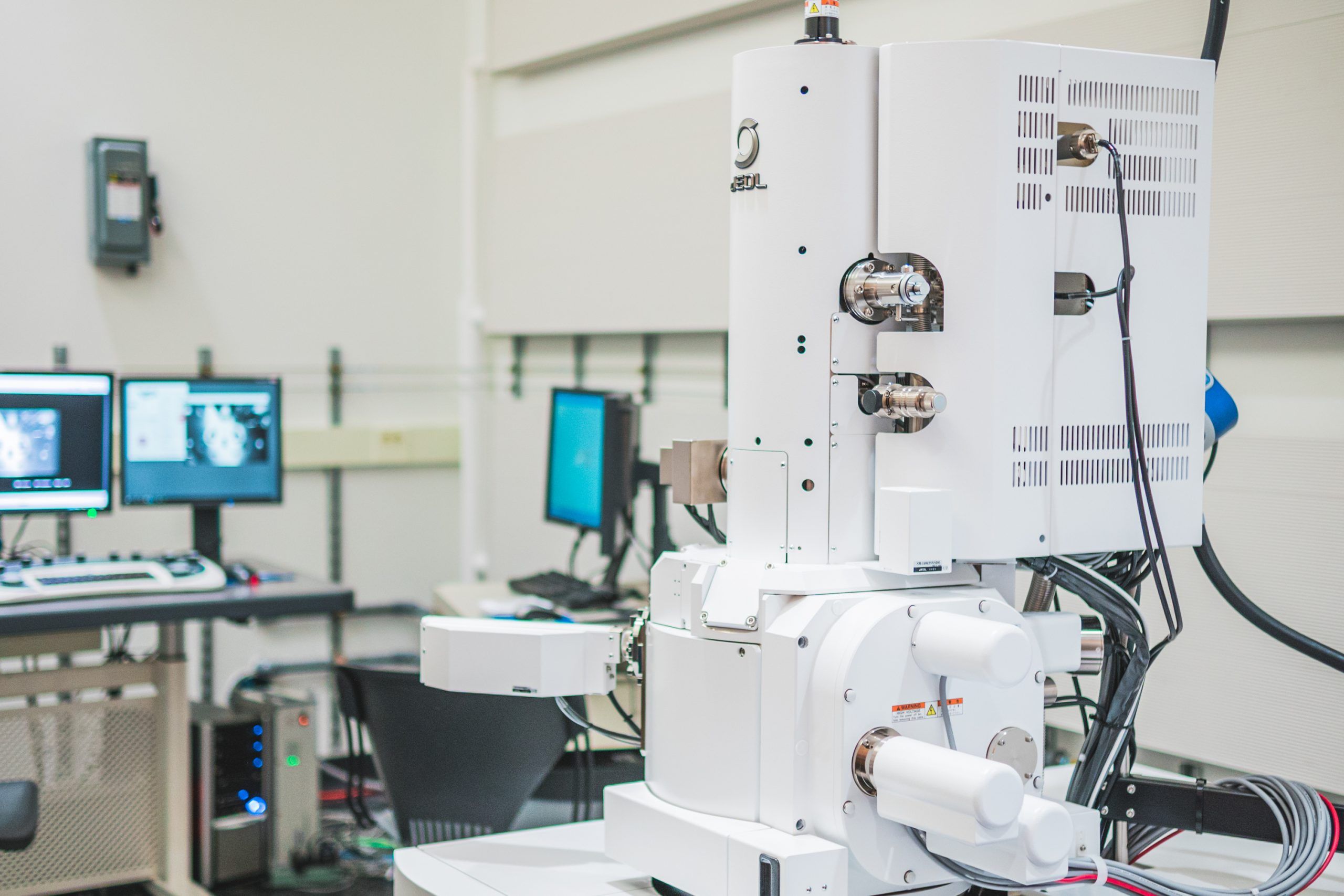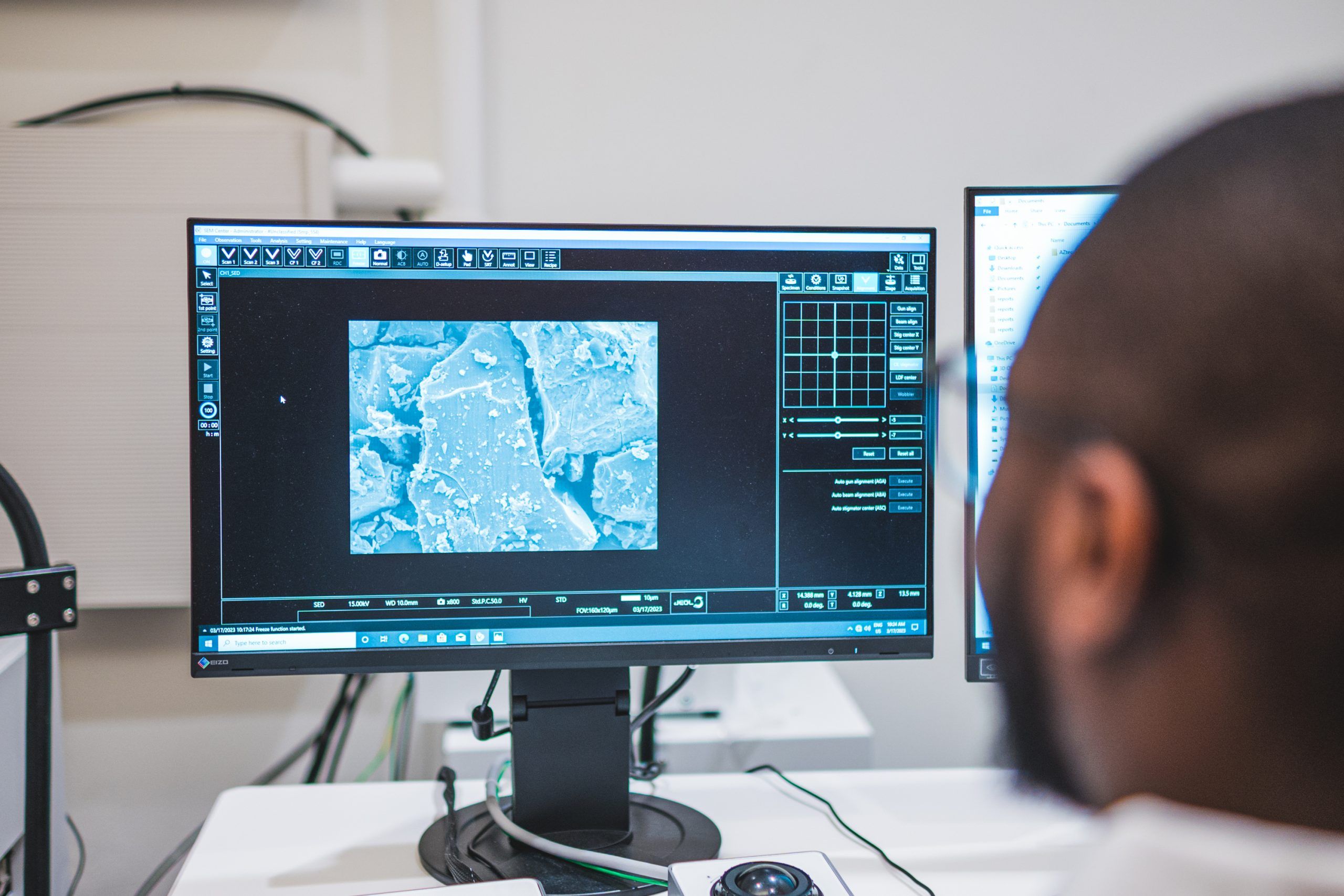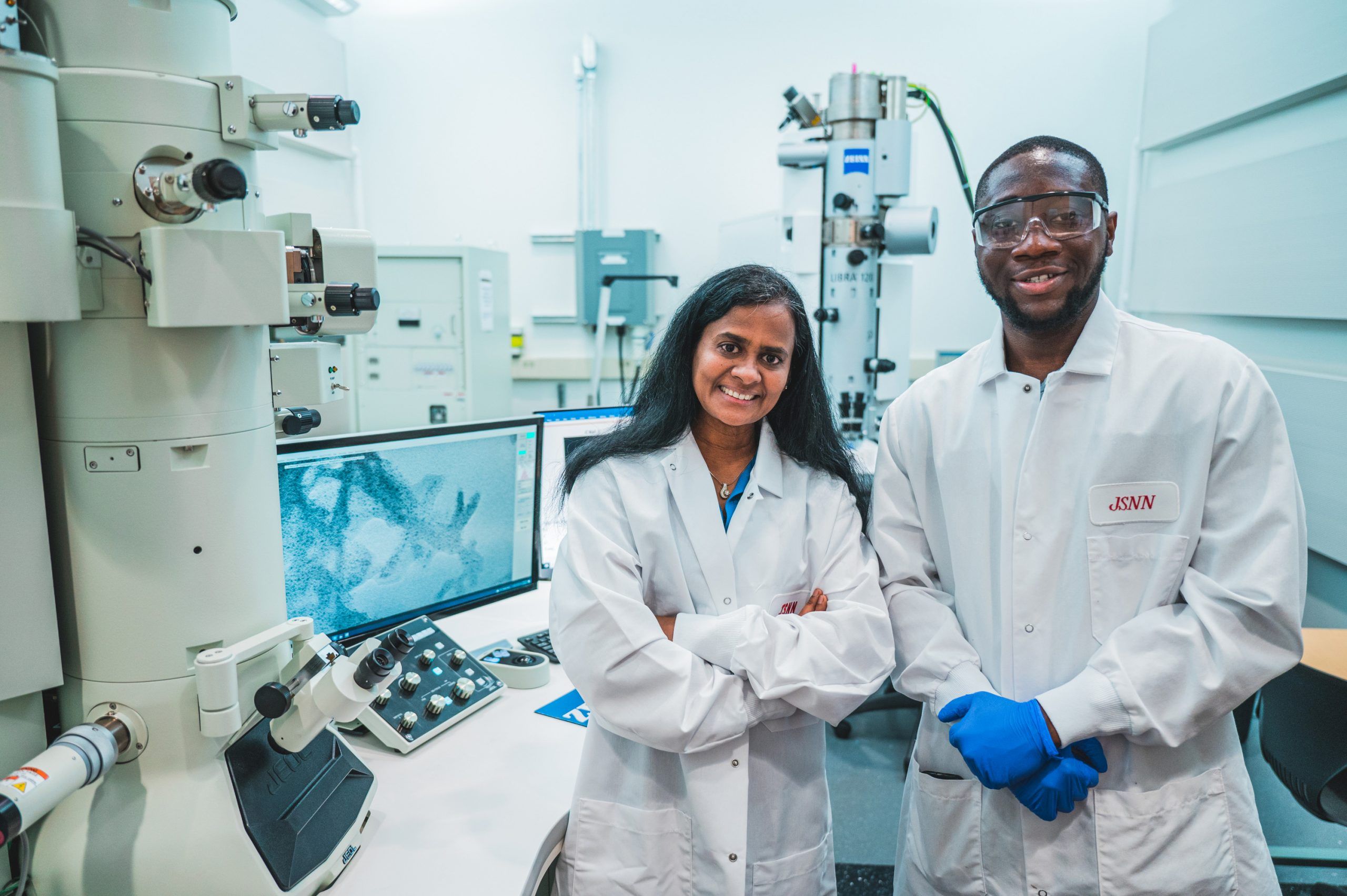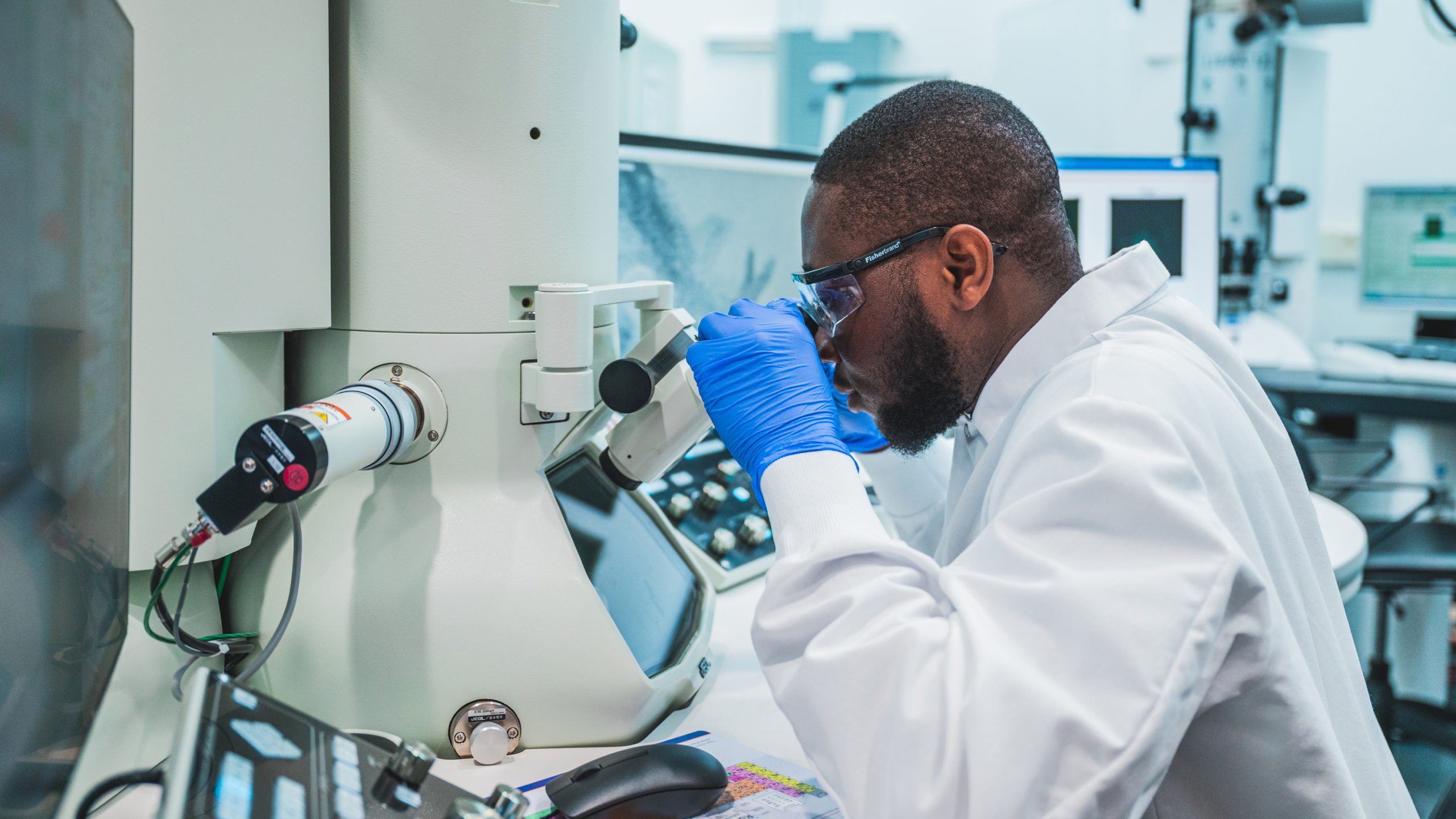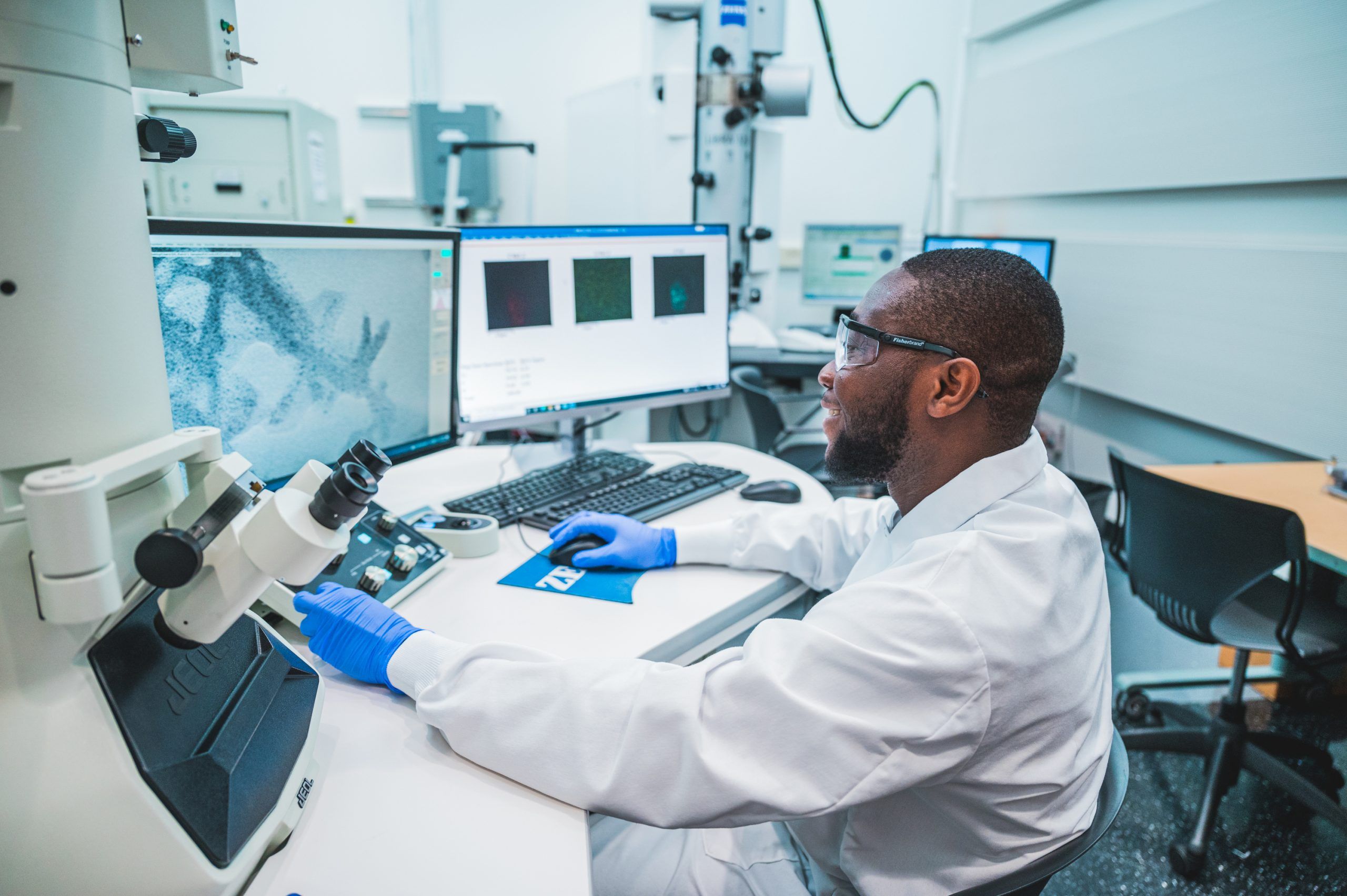At the nanoscale
Molecular and atomic-scale imaging paves the way for sustainable nanotech — and draws in graduate students
Atoms make up everything we can see – from one-celled organisms only visible under a microscope to miles-high mountains. But individual atoms and the complex structures they can form are too small to be seen by the naked eye, even under the most powerful optical microscopes.
That’s a challenge for scientists like the JSNN’s Dr. Hemali Rathnayake, who has devoted her career to studying and creating materials at the atomic scale.
To see, for example, openings that are big enough to let through some molecules but too small to let through others, she and her research collaborators use powerful microscopes that don’t rely on light at all. Instead, they use beams of electrons.
Nanoscience is the study of objects and phenomena on the nanoscale, or one-billionth of a meter. For comparison, a sheet of paper is about 100,000 nanometers thick. Or, put another way, if the diameter of the earth was one meter, then one nanometer would be about the diameter of a marble.
Nanoscience is the study of objects and phenomena on the nanoscale, or one-billionth of a meter. For comparison, a sheet of paper is about 100,000 nanometers thick.
Or, put another way, if the diameter of the earth was one meter, then one nanometer would be about the diameter of a marble.
“If we didn’t have access to these electron microscopes, then actually most of our research would not move forward in the nanoscale,” Rathnayake says. “We would be unable to do a lot of new science.”
Tools of the Trade
What do 55-million-year-old fossils, shrews with shrinking skulls, studies on Alzheimer’s and exercise’s impacts on the human brain, and tiny tech for a less toxic world have in common? The cutting-edge new tools driving discovery at UNCG.
The JSNN’s field emission scanning electron microscope, or FESEM, allows scientists and engineers to see structures down to 2 nanometers in size – smaller than the diameter of a strand of DNA. It allows researchers to see the surface of materials, Rathnayake says, and understand how that surface is structured: Are they crystals? How are they arranged?
The FESEM also enables scientists to examine the material’s chemical composition to determine the elements comprising them.
Rathnayake won a $422,400 grant from the U.S. Department of Agriculture for the JSNN’s FESEM, which was installed and operational in January of 2022. Another $599,000 grant from the Department of Defense funded the purchase of the transmission electron microscope, or TEM, installed in 2021.
The TEM projects a beam of electrons through a sample, allowing scientists to view the interior of a structure at an atomic scale. It allows for resolutions 10 times higher than the FESEM – down to about one-fifth of a nanometer, smaller than the diameter of a single atom of gold.
“That really opens up for us more capabilities to understand nanomaterials at, really, near atomic scale,” Rathnayake says.
Rathnayake’s research is focused on developing nanomaterials that can protect and improve the environment. Her team has created, for example, specially designed materials that can capture lithium or other waste materials in water, allowing them to be recycled for commercial uses while also cleaning up the environment.
“I wanted to make the nanoworld more environmentally friendly, more sustainable, and nontoxic,” she says. “If we are polluting the environment, we are not doing anything inventive.”
Without these microscopes at the JSNN, Rathnayake would have to use NC State University’s equipment. That makes the process of getting nanoscale images more time-consuming and expensive. It also reduces opportunities for UNCG students to get firsthand experience with the instruments.
Having the FESEM and TEM on-campus provides UNCG students opportunities they wouldn’t otherwise have, Rathnayake says. “They can become an expert on these instruments. Student training is a major reason we got this equipment.”
Beneficiaries range from high school students in UNCG’s Draelos Science Scholars Program to undergraduate researchers and graduate students – including those in the JSNN’s recently launched 12-credit Nanoscience Certificate Program. “It’s about growing the nanotechnology workforce,” says Rathnayake.
Adrah, who entered the doctoral program to study materials that can be used for environmental remediation, has used both electron microscopes for his work. He says, “Having direct access to these instruments has been crucial for our research.”
While the structures he studies are breathtakingly small, Adrah hopes that his education and research at JSNN will lead him to very visible rewards. “I aim to leverage my knowledge and contribute to the scientific community,” he says, “ultimately entering industry to conduct research that benefits society.”
